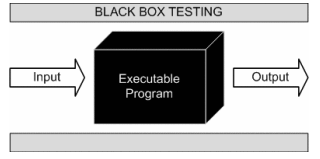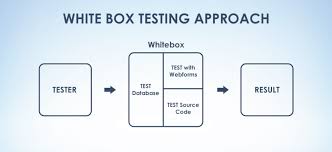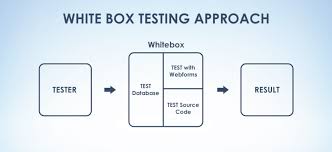In the field of software testing, there are many software Testing methods applied today. In this article, we will share three basic methods that are most commonly applied and its advantages and disadvantages. They are black box testing, white box testing. and gray box testing.
1. Black Box Testing Method

1.1. Black Box Testing Method – Definition
Black box testing is a method of software testing that examines the functionality of an application (eg: what the software does) without peering into its internal structures or workings
1.2. Black Box Testing Method – Advantages:
- Testers will not need to understand any code knowledge.
- Can find more bugs.
- Testing is done independently by developers, allowing objective views.
1.3. Black Box Testing Method – Disadvantages:
- Only a small number of inputs can be checked and many program paths or few sections will not be checked.
- The tests may be redundant if the software designer / developer has run the test.
2. White Box Testing Method

2.1. White Box Testing Method – Definition
White box testing (also known as clear box testing, glass box testing, transparent box testing or structural testing) is a method of testing software that tests internal structures or workings off an application, as opposed to black box testing.
While white box testing can be applied at the unit, integration and system levels of the software testing process, it is usually done at the unit level.
2.2. White Box Testing Method – Advantages:
- Automate easily
- Provide clear technical-based rules when stopping testing.
- Forcing testing experts to think carefully about error testing so the bug will be thorough.
2.3. White Box Testing Method – Disadvantages
- It takes time and effort.
- There will still be errors.
- Testing by this method requires extensive experience and expertise in testing.
3. Gray Box Testing Method

3.1. Gray Box Testing Method – Definition
Gray box testing is a combination of white box testing and black box testing. The aim of this testing is to search for the defects if any due to improper structure or improper usage of applications.
3.2. Gray Box Testing Method – Advantages:
- It is a combination of black and white box testing, so might be more optimal.
- Testing by gray box method can design complex test scenarios in a smarter way.
3.3. Gray Box Testing Method – Disadvantages:
- It is difficult to link errors when performing a gray box test for a distributed system application.
4. Comparison Between 3 Software Testing Methodologies
|
Black-Box Testing |
Grey-Box Testing |
White-Box Testing |
| The internal workings of an application is necessary | The tester has limited knowledge of the internal workings of the application. | Tester has full knowledge of the internal workings of the application. |
| Performed by end-users and also by testers and developers. | Performed by end-users and also by testers and developers. | Normally done by testers and developers. |
| Testing is based on external expectations – Internal behavior of the application is unknown. | Testing is done on the basis of high-level database diagrams and data flow diagrams. | Internal workings are fully known and the tester can design test data accordingly. |
| It is exhaustive and the least time-consuming. | Partly time-consuming and exhaustive. | The most exhaustive and time-consuming type of testing. |
| Not suited for algorithm testing. | Not suited for algorithm testing. | Suited for algorithm testing. |
Above are the 3 most basic software testing methods that any programmer needs to know. Choosing which method depends on the ability as well as the project you carry out.
Final Thoughts on Software Testing Methods
The diverse landscape of software testing methods plays a pivotal role in ensuring the reliability, functionality, and user satisfaction of software products.
By strategically incorporating Black Box, White Box and Gray Box testing approaches, development teams can uncover issues early, enhance overall software quality, and deliver products that meet both user expectations and industry standards. Embracing this trinity of testing methods empowers developers to navigate the complexities of modern software development with confidence and precision.
Should you have any questions related to methods of testing, contact us for further support.
Lotus Quality Assurance (LQA)
- Tel: (+84) 24-6660-7474
- Email: [email protected]
- Website: https://www.lotus-qa.com/
Frequently Asked Questions about Methods of Testing
What Are the Different Types of Software Testing Methods?
There are three universal methods of testing, which are Black Box, White Box and Gray Box. Each has its advantages and disadvantages that is helpful for particular situation.
How Do You Choose the Right Testing Method for Your Project?
Choosing the right testing method depends on various factors such as the project’s goals, requirements, timeline, and resources. Steps to pick a suitable testing method is to: Understand project requirements, Assess risk, Consider project constraints, Select appropriate methods, Prioritize testing phases.
What Are the Benefits of Implementing Different Testing Methods?
Using a variety of testing methods offers several benefits for software development: Early bug detection, Improved quality, User satisfaction, Efficiency, Risk mitigation, Cost savings.

